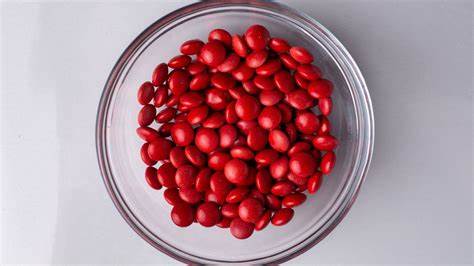Red Dye No. 3 is a synthetic color that has hitherto been used in foods especially beverages and in medicinal products and it has been outlawed by the U.S Food and Drug Administration (FDA). The ban comes after a long time the styrene dye has been associated with cancer amongst animals and massive pressure from health-conscious people. This step is regarded as a victory for public health despite the remaining concerns with other food additives still within the market.
What Is Red Dye 3?
Red Dye 3 or erythrosine or FD&C Red No. 3 is a petroleum-based red, brilliant shade colorant. It has been used in the production of candies and drinks, baked commodities, and some medicines due to its appearance. This dye was launched in the American markets in the 1960s and has for many a long time been used in the production of many snack foods and confectionaries. Nevertheless, there are years of scientific data that signaled that its use is unsafe.
Also read: Citibank Customers Report Fraud: Mobile App Outage Leads To Confusion
Why Did the FDA Ban Red Dye 3?
The FDA has recently decided to remove Red Dye 3 as the evidence of its adverse effects has emerged gradually. Here are the main reasons:
- Animal Studies: The researchers found that when rats were given high doses of the dye they developed thyroid tumors.
- Consumer Advocacy: CSPI and EWG have been campaigning to convince Congress to outlaw this product in foods for several years now.
- Legal Requirements: The Delaney Clause in the FDA Federal Food, Drug, and Cosmetic Act requires the FDA to withdraw from the use of any additive, that is found to be carcinogenic to animals or human beings.
The ban also places the U.S. hand in hand with countries such as the European Union where Red Dye 3 has been prohibited from being used in foods for years. The use of the dye in the United States for years was frequently blamed for being time-honored and incompatible with the contemporary standards in the sphere of food safety.
Timeline for Implementation
However, the FDA has allowed manufacturers several years to phase out the use of these tainted products. Food product producers have until Jan. 15, 2027, to have Red Dye 3 out of their products while pharmaceutical producers have until Jan. 18, 2028. This phased approach allows businesses some time to adjust and come up with safer methods of operating.
What Foods Contain Red Dye 3?
Red Dye 3 is present in foods of bright shades or colors and in medications. Some of the items that may contain it include:
- Sweets, such as candy corn, and all types of gummy products.
- Cupcake frostings and cake embellishments.
- Flavored fruit snacks, candies, and drinks.
However, those who would wish to avoid products that contain this dye should check for ‘Red 3’, ‘FD&C Red No. 3’, or erythrosine on the label.
The Health Concerns Behind Red Dye 3
That Red Dye 3 causes cancer in animals is well established, however the same has not been proven in human beings with the same certitude. The doses that yielded the rats with cancer were far in excess of the amount that individuals routinely ingest. However, the Delaney Clause requires action if any risk of cancer is present at any dose.
Other issues that odorless artificial dyes present include; the effects of the artificial dyes on the behavior of children. It has been proposed, however, that certain food dyes may cause hyperactivity or attention problems in some children. While Red Dye 3 has not been proven to cause these problems, parents are encouraged not to feed their children on goods containing synthetic additives where possible.
Why Did It Take So Long to Ban?
The lack of timely action required in banning Red Dye 3 underscores inconsistencies in the U.S. food safety system. Despite the fact that the dye was outlawed for cosmetics more than thirty years ago it remained in foods because of a number of pull and haul factors within the regulatory system and the food industry. Scholars argue that the FDA’s system of regulating additives has been criticized as being cumbersome and defender influenced by industry. People who fight for patients’ rights and consumers’ rights have accused the FDA of not intervening earlier to remove dangerous products from circulation.
Also read: Blue Origin’s New Glenn Rocket Launches: A Space Milestone
Alternatives to Red Dye 3
Instead of Red Dye 3, manufacturers have previously started choosing other colors to replace the dye. A common replacement for Red 28 is Red Dye 40 which is synthetic but has not been readily associated with cancer. Nevertheless, Red Dye 40 has its controversy. It has been linked to disruptive behaviors in children and has been identified to contain benzene, a chemical that causes cancer.
Safer natural color sources like beet juice, paprika extract, and carrots concentrate are increasingly being sought after. These natural dyes produced from locally available plants are safe from the health-hazardous chemicals that are used in synthetic additives and are preferred by most conscious consumers today.
A Global Perspective
The U.S. ban on Red Dye makes it has food safety laws a step closer to those countries that have more favorable rules. Europe, for instance, banned the dye in most foods in 1994. Even where a particular danger has not been definitively proven, the European Union operates on the precautionary principle, so where there is reasonable suspicion concerning the landfill additives, they are eliminated. The principle is somewhat different in the United States where regulatory actions tend to be based on strict scientific evidence. Government specialists believe that the Red Dye No.3 ban is a start for a more aggressive approach to food safety in America.
Conclusion
The decision by the FDA to ban Red Dye No. 3 makes a substantial step in the direction of protecting the citizens of the United States form food and medicine that they are fed daily. Thus, even though the demand has moved forward decades of research and advocacy, the ban says that people have opened their eyes to the dangers of artificial additives. Now, consumers can happily look forward to the meals that they consume being healthier and safer than ever before; yet, at the same time, there has been no concrete denying of having a long way to go when it comes to other bad additives.








